Japan has become a trending travel destination. The popularity of anime and manga and the irresistible taste of sushi and ramen have acquired a global reputation. In addition, the country features a unique bathing experience in its Japanese Onsen (温泉), which cannot be found anywhere else.
Japan is home to approximately 2,900 onsens, each offering a unique experience with various types and amenities. Don't worry! This guide will give you everything you need about Japanese onsens.
1. What is an Onsen?
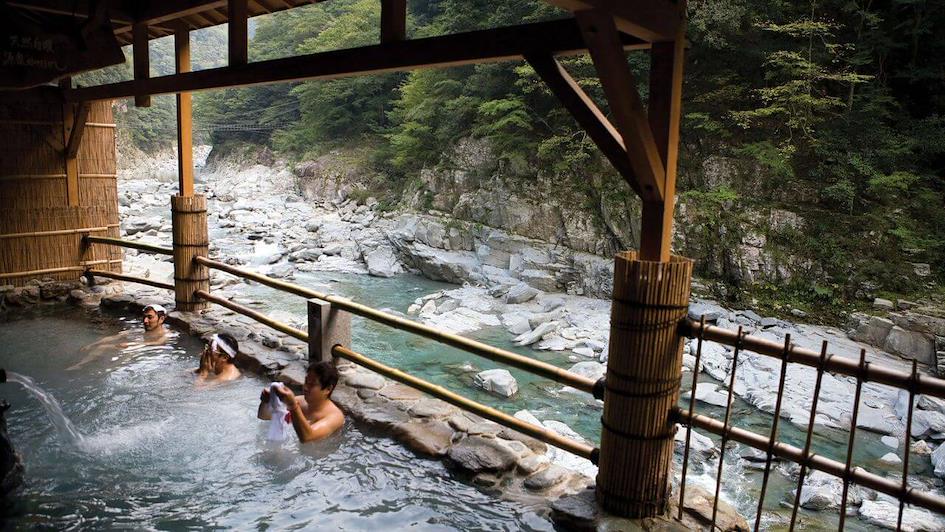
An Outdoor Onsen in Japan
The word "onsen" literally means "Hot Spring" in Japanese. As the name suggests, an onsen is a Japanese bath that typically uses water from hot springs between 25 and 44 degrees Celsius. Onsen can be naturally or artificially created; the former is known as "Tennen Onsen," and the latter is called "Jinko-Onsen."
In either case, for a bath to be considered an onsen, it must be heated and have at least one of the 19 elements, which include carbonated water, sulfur, sulfate water, iron, and lithium.
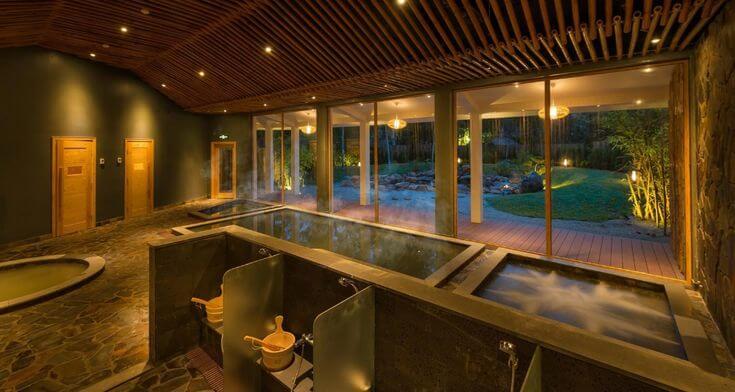
An Indoor Onsen in a Japanese Ryokan
An onsen can be in a traditional Japanese Inn called "Ryokan" (旅館) or a public bathhouse. However, some public bathhouses don't use hot spring water and just use hot water. These are known as "Sento" (銭湯) and are commonly found in huge urban areas. The Onsen can be indoor, known as "uchiyu" (内湯) or outdoor baths, known as "rotenburo" (露天風呂).
Outdoor baths can either have a side open to nature or completely open, offering an opportunity to soak in hot water under the open sky with stunning views. The mineral content of onsen water varies by location, affecting the therapeutic properties of the onsen experience.
2. Benefits of Onsen
Going to a Japanese onsen and soaking in the hot water sounds like an indulgence worth investing in. What may surprise you is that it also has many health benefits. Here are a few benefits that might convince you to add an onsen experience to your itinerary:
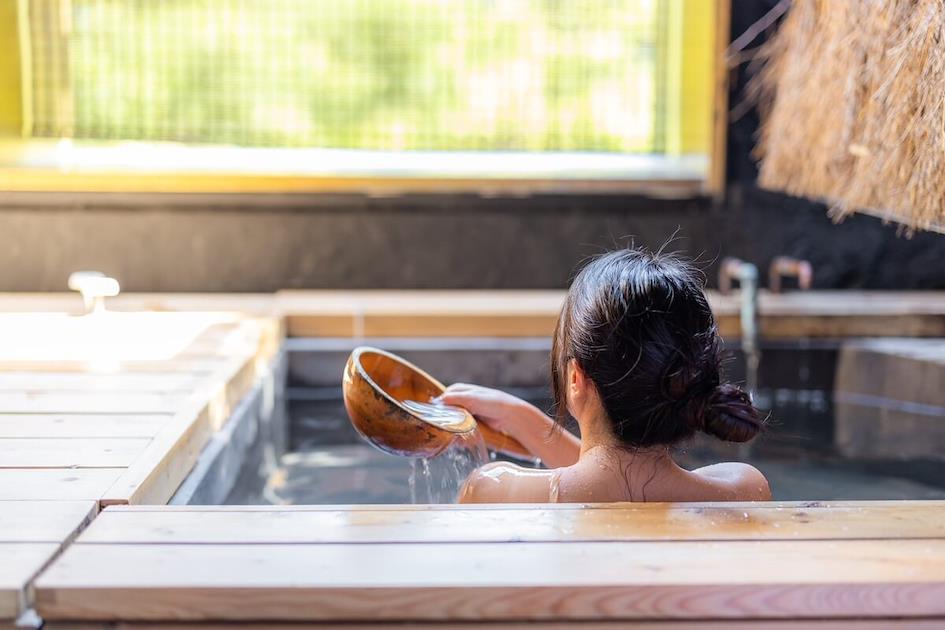
-
Relaxation and Stress Relief
The hot water of the Onsen creates a calming environment where you can de-stress. The mineral-rich water eases muscle tension and rejuvenates your body. The hot springs can be deeply relaxing as they melt away your fatigue.
-
Improves Circulation
Some onsens have radioactive water containing beneficial amounts of radium or radon, which can aid in treating circulatory diseases. Yet others are carbonated with carbon dioxide dissolved in the water, which can help in circulation by dilating your blood vessels and lowering blood pressure. Thus, the rich minerals in Onsen can do wonders for blood circulation.
-
Pain Relief
The warm water of Japanese Onsen is rich in beneficial minerals such as sulfur, calcium sulfate, magnesium, and sodium sulfate, making it perfect for pain relief, particularly for joint pain, cuts, and bruises. This mineral-rich water is renowned for its healing properties, offering an ideal remedy after a long day of travel.
-
Skin Benefits
You cannot miss the benefits of Onsen for your skin. The sulfur found in Onsen water is renowned for its effectiveness in treating acne and skin spots, while the carbonation in the water can leave your skin feeling beautifully smooth. Additionally, acidic hot springs have been known to alleviate chronic skin conditions.
However, if you have sensitive skin, avoiding these types of Onsen is advisable for a more comfortable experience.
-
Improved Sleep
Another notable benefit of deep relaxation from soaking in an onsen is the significant improvement in the quality and quantity of sleep. This is especially beneficial for individuals suffering from insomnia.
Also Read: 14 Organic Cosmetic Brands from Japan
3. Etiquettes of Bathing in an Onsen
When visiting a Japanese onsen, adhering to proper etiquette is a way to respect the local norms and culture. Following onsen manners ensures an enjoyable experience for everyone. Here are some general onsen etiquette guidelines to follow on your next visit:
-
Wash-up before the Bath
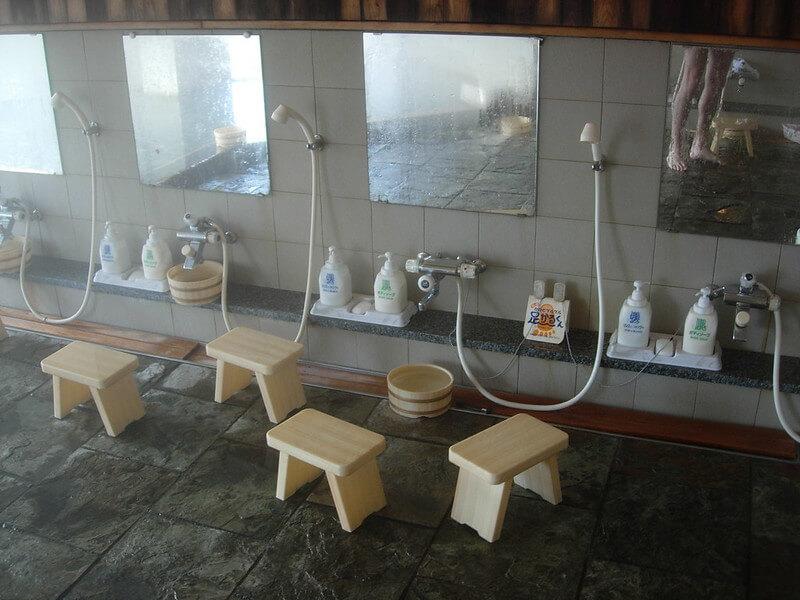
Before entering the bath area, clean yourself properly with soap and shampoo, which may be provided in the designated washing area. The bath is a place to relax and decompress, and everyone is expected to wash themselves before entering to keep the bath water clean.
Some onsen may not provide soap, or it may be a paid service, especially in public baths, but there is typically a washing area with a tub of water from which a bowl of water can be used for washing before.
-
Nudity is the Norm in the Bath Area
In most Onsen in Japan, you are given a locker and basket to put your belongings and clothes in the changing area. You are also allowed to bring a small towel inside the bath area, which can be used to cover up and give you some privacy. However, people are expected to go into the bath unclothed.
There is no need to worry; most baths are segregated according to gender. Even in mixed-gender baths, there are typically different times allocated for each gender. You can inquire about the specific timings from the staff. Onsen, which does not have segregation, may allow and even require you to wear some kind of clothing to cover up.
-
Mind your Towel
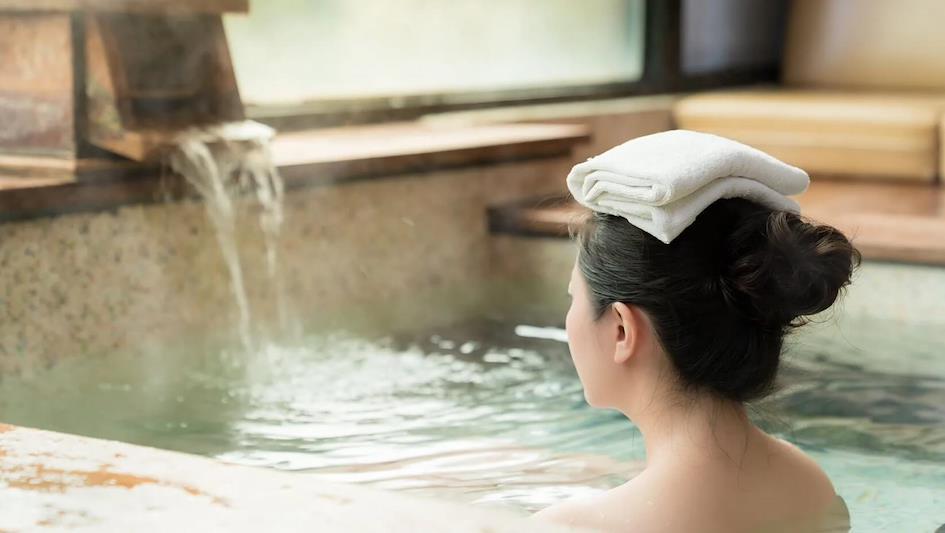
The small washcloth you are allowed to bring into the bath area is for covering yourself or drying yourself after leaving the bath. It should ideally not come in contact with the actual bath water. It is essential to be mindful of it and ensure that the towel is kept on the side when you are in the bath area or on your head, as many locals tend to.
After drying yourself with the small towel, you can enter the changing area and use the larger towel, usually provided, to dry off completely. The larger towel should not be brought into the bath area. Some hot springs in Japan will require you to dry yourself before entering the changing area so as not to soak the floors and make them slippery.
-
Respect the Tranquility
It is best not to talk too loudly in the Onsen. Splashing the water, diving into the bath water, and swimming inside are all frowned upon, as the Onsen is meant to be a place of relaxation and peace for everyone. Just sit back and let the hot water help you unwind and rest.
-
Making the Most of the Bath
Some onsens provide more than one pool with different temperatures and mineral compositions. Feel free to try more than one bath. The floor can sometimes be slippery, so be mindful not to slip. It is also not customary to rinse after soaking in the Onsen. This is because the water is rich in minerals and has therapeutic benefits. Just a light pat-down with the towel is sufficient.
However, if you prefer a quick rinse you can do so too before completely drying off.
4. What To Pay Attention to if You Want To Visit Onsen
Besides the onsen manners, there are some more things that one should be aware of before going to Onsen:
-
Tattoos and Onsens
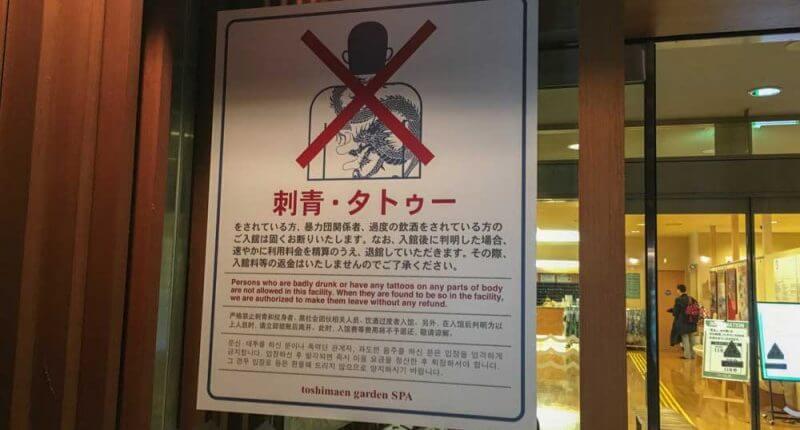
Although many modern onsens now permit tattoos, traditional onsens typically do not allow guests with tattoos to enter. This is due to the historical association of tattoos with the Yakuza, Japan's organized crime groups. Some onsens may require you to cover your tattoos with stickers.
To avoid disappointment, it's a good idea to check the Onsen's website or inquire beforehand if you have tattoos.
-
Bathing Hours
Onsen hours can depend on the establishment. Some onsen are only open for day use, while others can be used only if you stay the night at the Onsen. Some onsens also offer private pools for guests, while others have bathing pools located within the guest rooms. Be sure to check the specific timings before you go.
-
What to Bring
While many onsens already provide you with toiletries and towels, especially if you are in a Ryokan, a public onsen or a day-use onsen may not provide you with such things. Thus, you can pack essential stuff like a small washcloth and a large towel to dry off. You can also bring a pair of sandals or flip-flops.
-
Temperature and Hydration
The water in Onsen can range from 40 to 45 degrees Celsius, which can be quite hot. A way to acclimate to the hot water is to start by dipping your toes and slowly immersing yourself. By soaking for short periods, taking breaks and hydrating with lots of water before and after soaking you can avoid any health issues.
-
Separate Baths
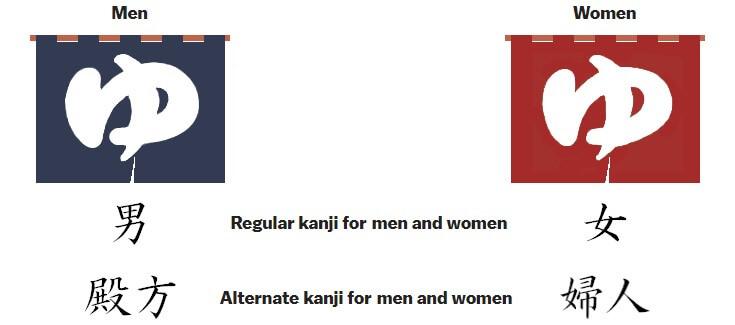
As we know, many Onsen have gender-segregated baths. Signs with "otoko" indicate they are for men, and those with "ona" indicate they are for women. Check for these signs before entering the bath area.
The most important tip is to loosen up and thoroughly relish the experience! Embrace the scenes and tranquility of the Japanese Onsen.
5. Best Onsens in Japan
If you are wondering which is the best Onsen in Japan, let me tell you that the "truly" best Onsen depends highly on your preference. However, the following are the top 3 Onsen to get you started:
-
Kusatsu Onsen, Gunma Prefecture
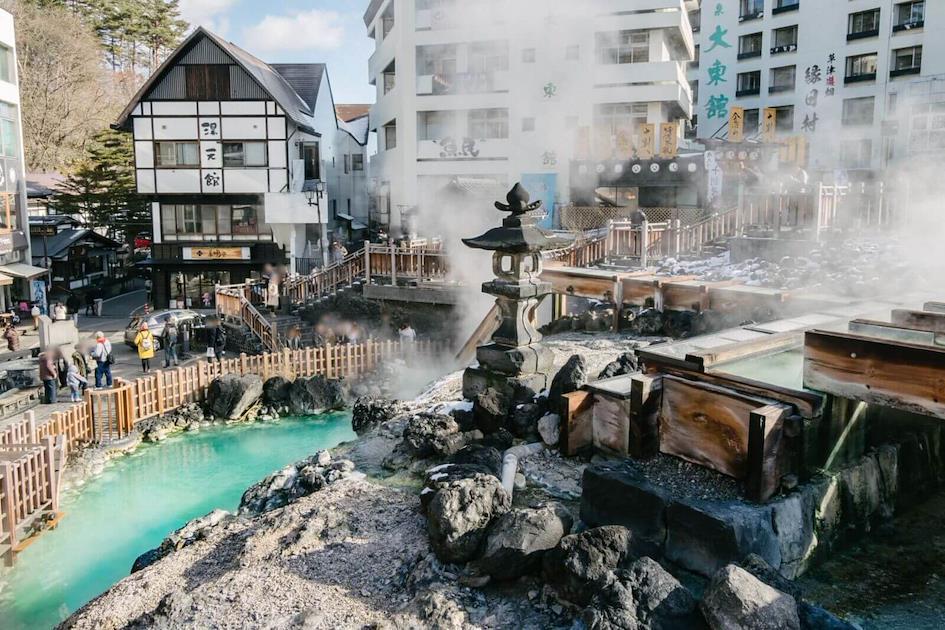
This beautiful Onsen is nestled in the hills of the Gunma prefecture and is famous for its highly acidic waters. It is a charming town with many public bathhouses offering a traditional bath experience in the healing waters of the hot spring. It also has a rich history, which makes it an ideal destination to cool down and immerse yourself in the local culture and sights.
-
Hakone Onsen, Kanagawa Prefecture
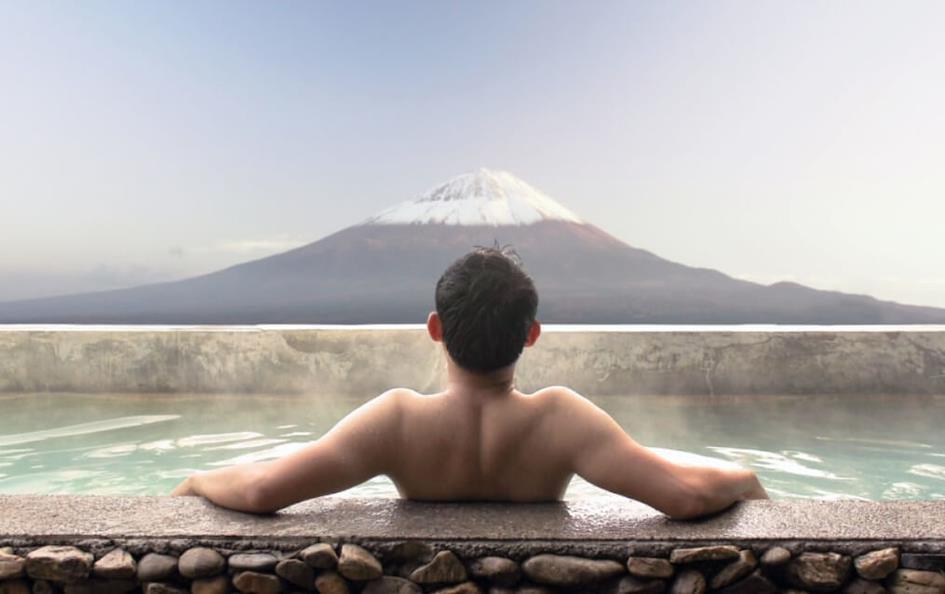
This onsen destination is reputed for its convenience because it is located near Tokyo. Hakone Onsen also has theme parks that offer onsen experiences like coffee or sake baths. This place has true natural beauty and views of Mountain Fuji. What more can one ask for?
-
Noboribetsu Onsen, Hokkaido Prefecture
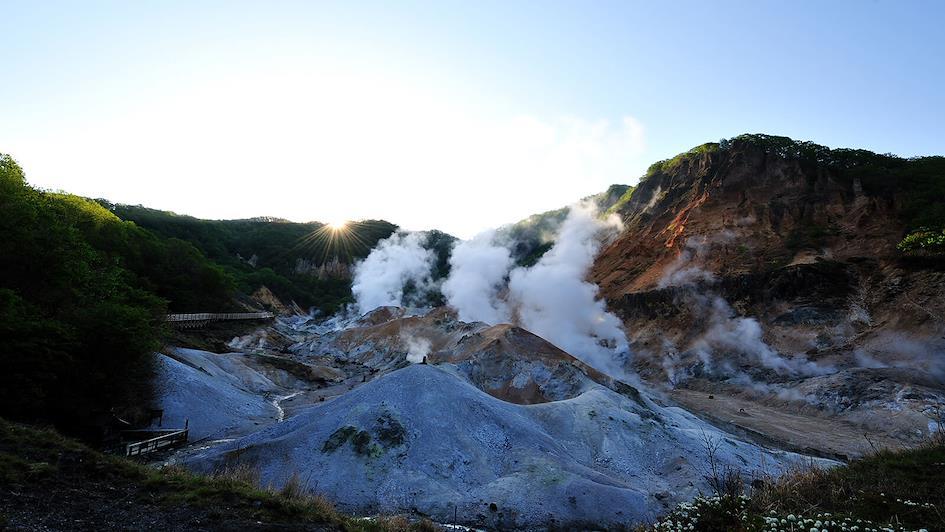
In Japan's northernmost island, the volcanic region of Jigokudani, or "Hell Valley," has boiling hot onsens in its geothermal landscape. The several baths at Noboribetsu Onsen offer interesting water types and therapeutic properties. You can also experience rotenburo (outdoor pools) in the area for a breathtaking onsen experience.
6. Conclusion
Visiting an onsen in Japan offers more than just the therapeutic benefits of hot springs. It provides an opportunity to immerse yourself in this ancient practice's rich culture and traditions. To fully enjoy this cultural experience, following proper onsen etiquette and guidelines is essential. We hope the tips above will help you have a rejuvenating and enchanting experience at a Japanese onsen.
Have you signed up for ZenMarket yet?
ZenMarket is the place to get your hands on goods directly from Japan!
Sign up for FREE now